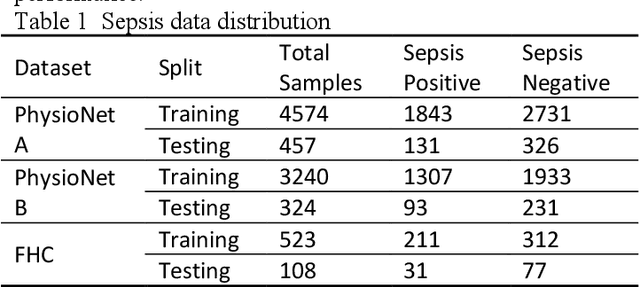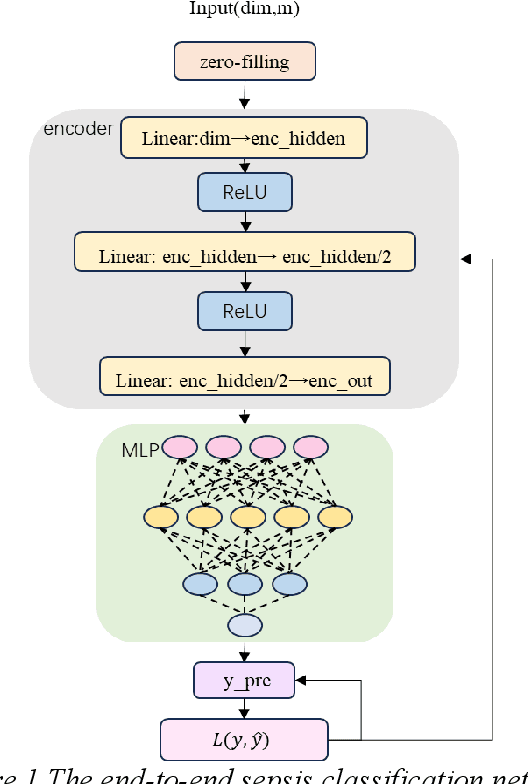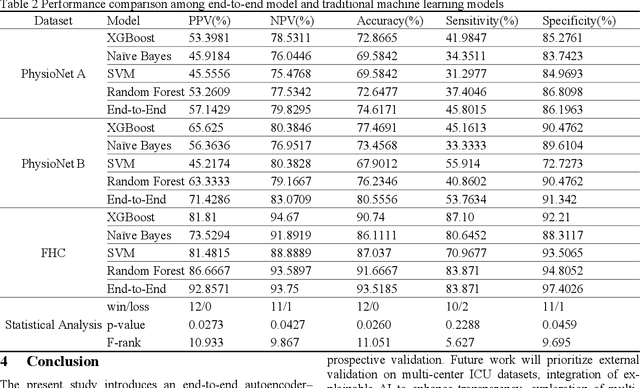Di Wu
School of Optoelectronic Science and Engineering, Soochow University
DiffRhythm 2: Efficient and High Fidelity Song Generation via Block Flow Matching
Oct 27, 2025Abstract:Generating full-length, high-quality songs is challenging, as it requires maintaining long-term coherence both across text and music modalities and within the music modality itself. Existing non-autoregressive (NAR) frameworks, while capable of producing high-quality songs, often struggle with the alignment between lyrics and vocal. Concurrently, catering to diverse musical preferences necessitates reinforcement learning from human feedback (RLHF). However, existing methods often rely on merging multiple models during multi-preference optimization, which results in significant performance degradation. To address these challenges, we introduce DiffRhythm 2, an end-to-end framework designed for high-fidelity, controllable song generation. To tackle the lyric alignment problem, DiffRhythm 2 employs a semi-autoregressive architecture based on block flow matching. This design enables faithful alignment of lyrics to singing vocals without relying on external labels and constraints, all while preserving the high generation quality and efficiency of NAR models. To make this framework computationally tractable for long sequences, we implement a music variational autoencoder (VAE) that achieves a low frame rate of 5 Hz while still enabling high-fidelity audio reconstruction. In addition, to overcome the limitations of multi-preference optimization in RLHF, we propose cross-pair preference optimization. This method effectively mitigates the performance drop typically associated with model merging, allowing for more robust optimization across diverse human preferences. We further enhance musicality and structural coherence by introducing stochastic block representation alignment loss.
LLMs as Scalable, General-Purpose Simulators For Evolving Digital Agent Training
Oct 16, 2025Abstract:Digital agents require diverse, large-scale UI trajectories to generalize across real-world tasks, yet collecting such data is prohibitively expensive in both human annotation, infra and engineering perspectives. To this end, we introduce $\textbf{UI-Simulator}$, a scalable paradigm that generates structured UI states and transitions to synthesize training trajectories at scale. Our paradigm integrates a digital world simulator for diverse UI states, a guided rollout process for coherent exploration, and a trajectory wrapper that produces high-quality and diverse trajectories for agent training. We further propose $\textbf{UI-Simulator-Grow}$, a targeted scaling strategy that enables more rapid and data-efficient scaling by prioritizing high-impact tasks and synthesizes informative trajectory variants. Experiments on WebArena and AndroidWorld show that UI-Simulator rivals or surpasses open-source agents trained on real UIs with significantly better robustness, despite using weaker teacher models. Moreover, UI-Simulator-Grow matches the performance of Llama-3-70B-Instruct using only Llama-3-8B-Instruct as the base model, highlighting the potential of targeted synthesis scaling paradigm to continuously and efficiently enhance the digital agents.
STEMS: Spatial-Temporal Enhanced Safe Multi-Agent Coordination for Building Energy Management
Oct 15, 2025Abstract:Building energy management is essential for achieving carbon reduction goals, improving occupant comfort, and reducing energy costs. Coordinated building energy management faces critical challenges in exploiting spatial-temporal dependencies while ensuring operational safety across multi-building systems. Current multi-building energy systems face three key challenges: insufficient spatial-temporal information exploitation, lack of rigorous safety guarantees, and system complexity. This paper proposes Spatial-Temporal Enhanced Safe Multi-Agent Coordination (STEMS), a novel safety-constrained multi-agent reinforcement learning framework for coordinated building energy management. STEMS integrates two core components: (1) a spatial-temporal graph representation learning framework using a GCN-Transformer fusion architecture to capture inter-building relationships and temporal patterns, and (2) a safety-constrained multi-agent RL algorithm incorporating Control Barrier Functions to provide mathematical safety guarantees. Extensive experiments on real-world building datasets demonstrate STEMS's superior performance over existing methods, showing that STEMS achieves 21% cost reduction, 18% emission reduction, and dramatically reduces safety violations from 35.1% to 5.6% while maintaining optimal comfort with only 0.13 discomfort proportion. The framework also demonstrates strong robustness during extreme weather conditions and maintains effectiveness across different building types.
Federated Unlearning in the Wild: Rethinking Fairness and Data Discrepancy
Oct 08, 2025Abstract:Machine unlearning is critical for enforcing data deletion rights like the "right to be forgotten." As a decentralized paradigm, Federated Learning (FL) also requires unlearning, but realistic implementations face two major challenges. First, fairness in Federated Unlearning (FU) is often overlooked. Exact unlearning methods typically force all clients into costly retraining, even those uninvolved. Approximate approaches, using gradient ascent or distillation, make coarse interventions that can unfairly degrade performance for clients with only retained data. Second, most FU evaluations rely on synthetic data assumptions (IID/non-IID) that ignore real-world heterogeneity. These unrealistic benchmarks obscure the true impact of unlearning and limit the applicability of current methods. We first conduct a comprehensive benchmark of existing FU methods under realistic data heterogeneity and fairness conditions. We then propose a novel, fairness-aware FU approach, Federated Cross-Client-Constrains Unlearning (FedCCCU), to explicitly address both challenges. FedCCCU offers a practical and scalable solution for real-world FU. Experimental results show that existing methods perform poorly in realistic settings, while our approach consistently outperforms them.
USEANet: Ultrasound-Specific Edge-Aware Multi-Branch Network for Lightweight Medical Image Segmentation
Sep 09, 2025



Abstract:Ultrasound image segmentation faces unique challenges including speckle noise, low contrast, and ambiguous boundaries, while clinical deployment demands computationally efficient models. We propose USEANet, an ultrasound-specific edge-aware multi-branch network that achieves optimal performance-efficiency balance through four key innovations: (1) ultrasound-specific multi-branch processing with specialized modules for noise reduction, edge enhancement, and contrast improvement; (2) edge-aware attention mechanisms that focus on boundary information with minimal computational overhead; (3) hierarchical feature aggregation with adaptive weight learning; and (4) ultrasound-aware decoder enhancement for optimal segmentation refinement. Built on an ultra-lightweight PVT-B0 backbone, USEANet significantly outperforms existing methods across five ultrasound datasets while using only 3.64M parameters and 0.79G FLOPs. Experimental results demonstrate superior segmentation accuracy with 67.01 IoU on BUSI dataset, representing substantial improvements over traditional approaches while maintaining exceptional computational efficiency suitable for real-time clinical applications. Code is available at https://github.com/chouheiwa/USEANet.
End to End Autoencoder MLP Framework for Sepsis Prediction
Aug 26, 2025


Abstract:Sepsis is a life threatening condition that requires timely detection in intensive care settings. Traditional machine learning approaches, including Naive Bayes, Support Vector Machine (SVM), Random Forest, and XGBoost, often rely on manual feature engineering and struggle with irregular, incomplete time-series data commonly present in electronic health records. We introduce an end-to-end deep learning framework integrating an unsupervised autoencoder for automatic feature extraction with a multilayer perceptron classifier for binary sepsis risk prediction. To enhance clinical applicability, we implement a customized down sampling strategy that extracts high information density segments during training and a non-overlapping dynamic sliding window mechanism for real-time inference. Preprocessed time series data are represented as fixed dimension vectors with explicit missingness indicators, mitigating bias and noise. We validate our approach on three ICU cohorts. Our end-to-end model achieves accuracies of 74.6 percent, 80.6 percent, and 93.5 percent, respectively, consistently outperforming traditional machine learning baselines. These results demonstrate the framework's superior robustness, generalizability, and clinical utility for early sepsis detection across heterogeneous ICU environments.
Adaptive Ensemble Learning with Gaussian Copula for Load Forecasting
Aug 25, 2025Abstract:Machine learning (ML) is capable of accurate Load Forecasting from complete data. However, there are many uncertainties that affect data collection, leading to sparsity. This article proposed a model called Adaptive Ensemble Learning with Gaussian Copula to deal with sparsity, which contains three modules: data complementation, ML construction, and adaptive ensemble. First, it applies Gaussian Copula to eliminate sparsity. Then, we utilise five ML models to make predictions individually. Finally, it employs adaptive ensemble to get final weighted-sum result. Experiments have demonstrated that our model are robust.
FEAT: A Multi-Agent Forensic AI System with Domain-Adapted Large Language Model for Automated Cause-of-Death Analysis
Aug 11, 2025Abstract:Forensic cause-of-death determination faces systemic challenges, including workforce shortages and diagnostic variability, particularly in high-volume systems like China's medicolegal infrastructure. We introduce FEAT (ForEnsic AgenT), a multi-agent AI framework that automates and standardizes death investigations through a domain-adapted large language model. FEAT's application-oriented architecture integrates: (i) a central Planner for task decomposition, (ii) specialized Local Solvers for evidence analysis, (iii) a Memory & Reflection module for iterative refinement, and (iv) a Global Solver for conclusion synthesis. The system employs tool-augmented reasoning, hierarchical retrieval-augmented generation, forensic-tuned LLMs, and human-in-the-loop feedback to ensure legal and medical validity. In evaluations across diverse Chinese case cohorts, FEAT outperformed state-of-the-art AI systems in both long-form autopsy analyses and concise cause-of-death conclusions. It demonstrated robust generalization across six geographic regions and achieved high expert concordance in blinded validations. Senior pathologists validated FEAT's outputs as comparable to those of human experts, with improved detection of subtle evidentiary nuances. To our knowledge, FEAT is the first LLM-based AI agent system dedicated to forensic medicine, offering scalable, consistent death certification while maintaining expert-level rigor. By integrating AI efficiency with human oversight, this work could advance equitable access to reliable medicolegal services while addressing critical capacity constraints in forensic systems.
Neuro-MoBRE: Exploring Multi-subject Multi-task Intracranial Decoding via Explicit Heterogeneity Resolving
Aug 06, 2025Abstract:Neurophysiological decoding, fundamental to advancing brain-computer interface (BCI) technologies, has significantly benefited from recent advances in deep learning. However, existing decoding approaches largely remain constrained to single-task scenarios and individual subjects, limiting their broader applicability and generalizability. Efforts towards creating large-scale neurophysiological foundation models have shown promise, but continue to struggle with significant challenges due to pervasive data heterogeneity across subjects and decoding tasks. Simply increasing model parameters and dataset size without explicitly addressing this heterogeneity fails to replicate the scaling successes seen in natural language processing. Here, we introduce the Neural Mixture of Brain Regional Experts (Neuro-MoBRE), a general-purpose decoding framework explicitly designed to manage the ubiquitous data heterogeneity in neurophysiological modeling. Neuro-MoBRE incorporates a brain-regional-temporal embedding mechanism combined with a mixture-of-experts approach, assigning neural signals from distinct brain regions to specialized regional experts on a unified embedding basis, thus explicitly resolving both structural and functional heterogeneity. Additionally, our region-masked autoencoding pre-training strategy further enhances representational consistency among subjects, complemented by a task-disentangled information aggregation method tailored to effectively handle task-specific neural variations. Evaluations conducted on intracranial recordings from 11 subjects across five diverse tasks, including complex language decoding and epileptic seizure diagnosis, demonstrate that Neuro-MoBRE surpasses prior art and exhibits robust generalization for zero-shot decoding on unseen subjects.
Hybrid-Domain Synergistic Transformer for Hyperspectral Image Denoising
Jul 27, 2025Abstract:Hyperspectral image denoising faces the challenge of multi-dimensional coupling of spatially non-uniform noise and spectral correlation interference. Existing deep learning methods mostly focus on RGB images and struggle to effectively handle the unique spatial-spectral characteristics and complex noise distributions of hyperspectral images (HSI). This paper proposes an HSI denoising framework, Hybrid-Domain Synergistic Transformer Network (HDST), based on frequency domain enhancement and multiscale modeling, achieving three-dimensional collaborative processing of spatial, frequency and channel domains. The method innovatively integrates three key mechanisms: (1) introducing an FFT preprocessing module with multi-band convolution to extract cross-band correlations and decouple spectral noise components; (2) designing a dynamic cross-domain attention module that adaptively fuses spatial domain texture features and frequency domain noise priors through a learnable gating mechanism; (3) building a hierarchical architecture where shallow layers capture global noise statistics using multiscale atrous convolution, and deep layers achieve detail recovery through frequency domain postprocessing. Experiments on both real and synthetic datasets demonstrate that HDST significantly improves denoising performance while maintaining computational efficiency, validating the effectiveness of the proposed method. This research provides new insights and a universal framework for addressing complex noise coupling issues in HSI and other high-dimensional visual data. The code is available at https://github.com/lhy-cn/HDST-HSIDenoise.
 Add to Chrome
Add to Chrome Add to Firefox
Add to Firefox Add to Edge
Add to Edge